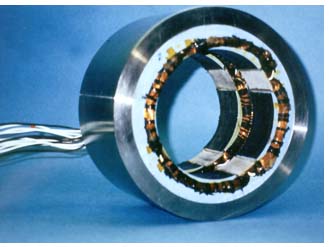Have you heard? Elon Musk, founder of Tesla Motors, has this idea about boring a tunnel on the eastern seaboard between the Big Apple and D.C. Its purpose? Transporting people between the two cities and in 29 minutes, no less. Proposed too are stops in Philadelphia, Pennsylvania and Baltimore, Maryland, based on what I understand to be the case. The idea is nothing if it isn’t laudable but, beyond that, there are many questions.
A grandiose scheme? A bit, perhaps. But, no more grandiose than a fully computer-controlled motor vehicle platform, in my view.
Assuming the idea does get official or formal governmental authorization to move forward, there is the matter of cost: How much will it be?
Next comes the issue of how monies will be raised to pay for it. Where will those come from? A public-private partnership? Fully publicly funded? Fully privately funded? What?

There’s the technology part. Right now it is not fully developed. From what I have learned work is ongoing but it is not at a point where this technological means of travel is ready for prime time. This is not to say that the technology won’t ever be, though, but it is not right now.
Add to all of this the aspect of throughput.
Throughput is the term associated with the number of people that can be transported per enclosed pod, capsule, transporter in a given amount of time. As it relates to the Hyperloop, the number of people accommodated by one of these capsules is approximately 28. Question: Will the pods allow passenger standing or only sitting? And, what about onboard restrooms or in-transit meals – completely out of the question? The pods will, apparently, travel at a top speed of somewhere in the neighborhood of 760 miles per hour, according to what I understand.
In a way all this reminds me of the movie Contact and specifically worm-hole travel. Could this be where Musk got his inspiration? It is difficult to say.
It is amazing how far this concept has come in the time that it has (since publicly introduced in Aug. 2013), this idea of evacuated tube travel. Who would’ve thought?!
And, what does all of this have to do with air quality? A lot, as a matter of fact.
First of all, placing transportation corridors in the ground (subsurface) is a fantastic idea. I mean, why not?! The Swiss put in the 35.47-mile-long (57.09-kilometers-long) Gotthard Base Tunnel through the Swiss Alps. It serves as a rail conduit for trains. In effect to connect Washington, D.C. and New York City, a distance of roughly 280 miles, to tunnel that distance would be like laying nearly eight of the Gotthard Base Tunnels end-to-end. Not an impossible feat by any stretch of the imagination, but with the know-how and a lot of elbow grease, it is something that could definitely be done.
Meanwhile, throughput one way could be as much as 1,680 passengers-per-hour moved, that is, assuming 60 pods are throughputted in an hour’s time. That’s a new pod leaving every minute. If that is stretched out to five-minute intervals – a much more realistic figure based on boarding- and alighting-time requirements at stations – then the throughput is markedly reduced to 336 passengers moved per hour in one direction throughputted. Add in the other direction of travel, and that works out to anywhere from 672 to 3,360 pod patrons per hour served. Three-hundred and thirty-six by the way is probably on the order of what the typical high-speed-rail train handles per individual run.
At any rate, if those 672 to 3,360 passengers are conveyed through pods in an hour both ways say between the Big Apple and the City of Brotherly Love (Philadelphia), this will mean that many fewer people potentially not traveling in internal-combustion-powered transport, whether that be by automobile or plane. And, this is where the spare-the-air premise comes into play. By the same token, it will also put less pressure and vehicles and/or planes on the road and/or in the skies, respectively.
And, speaking of high-speed rail, the advantages of sealed-tube transport over conventional travel is such that it is protected from the elements, wind resistance and turbulence, compared to those modes that it directly affects, becomes non-existent at best or negligible at worst and, of course, there is a “presumed” or expected speed advantage.
This newest of new versions of travel could take some time before it is ready for prime time, but, I can tell you this: A lot of people believe in it, not the least which is Musk himself, and development of travel-in-a-tube keeps progressing.
So, is this a pipe dream or new revolution in automated personal mobility? What do you think?
Image above: NASA
– Alan Kandel